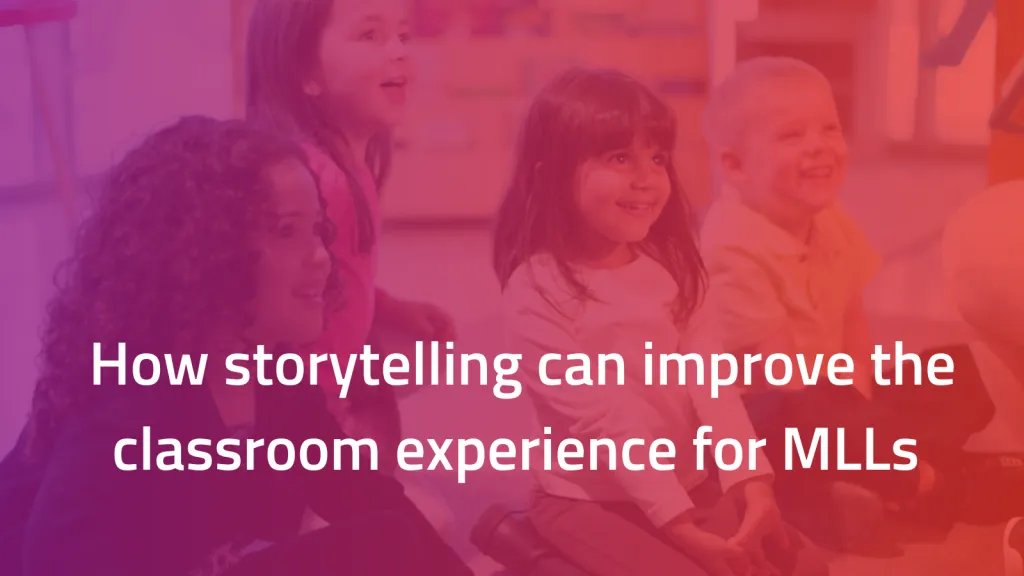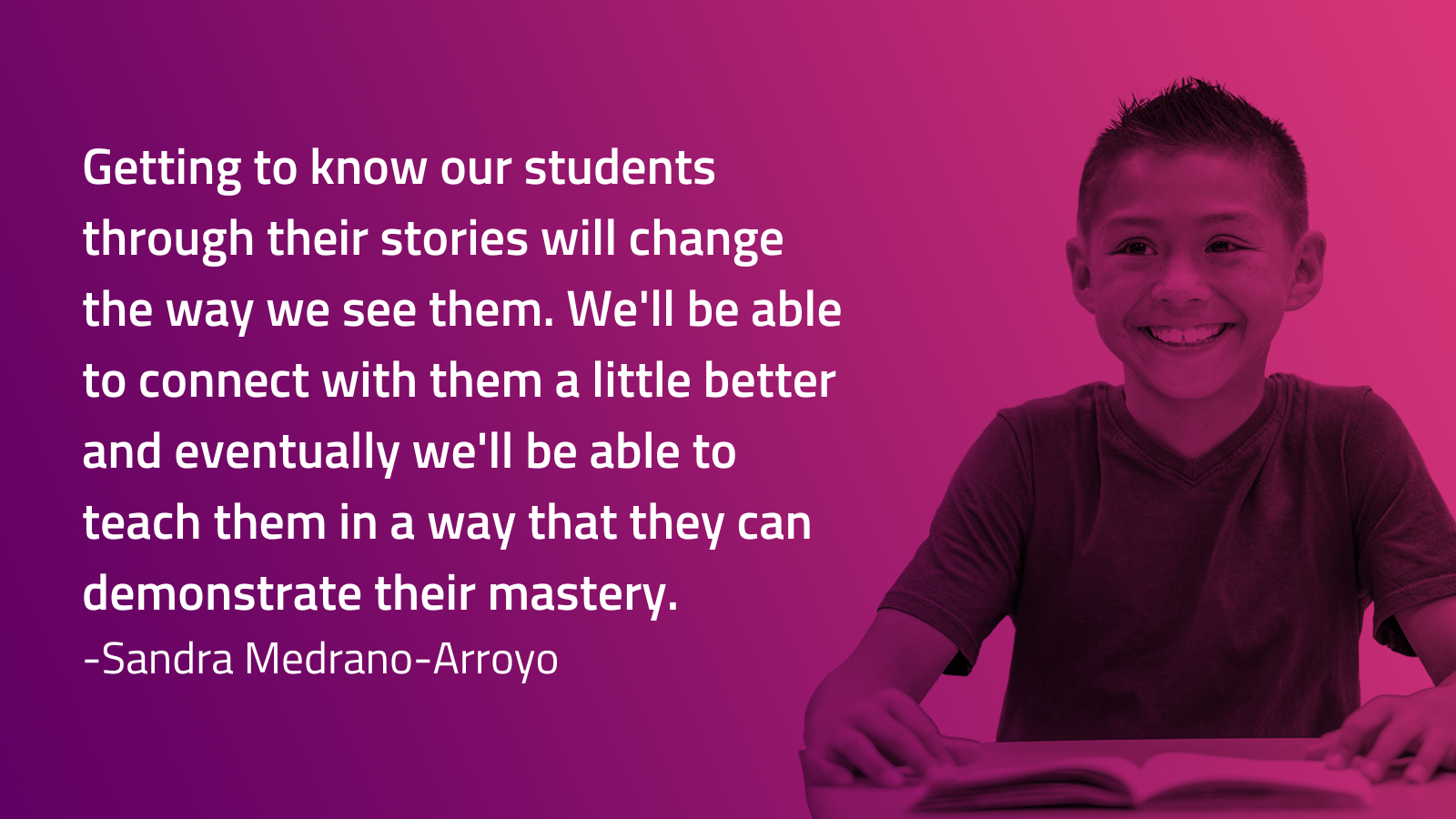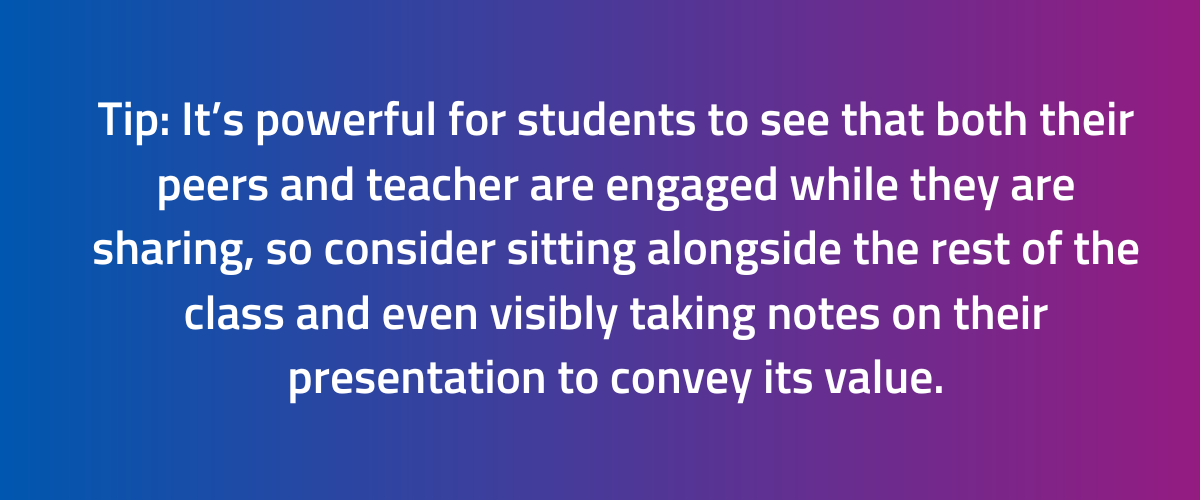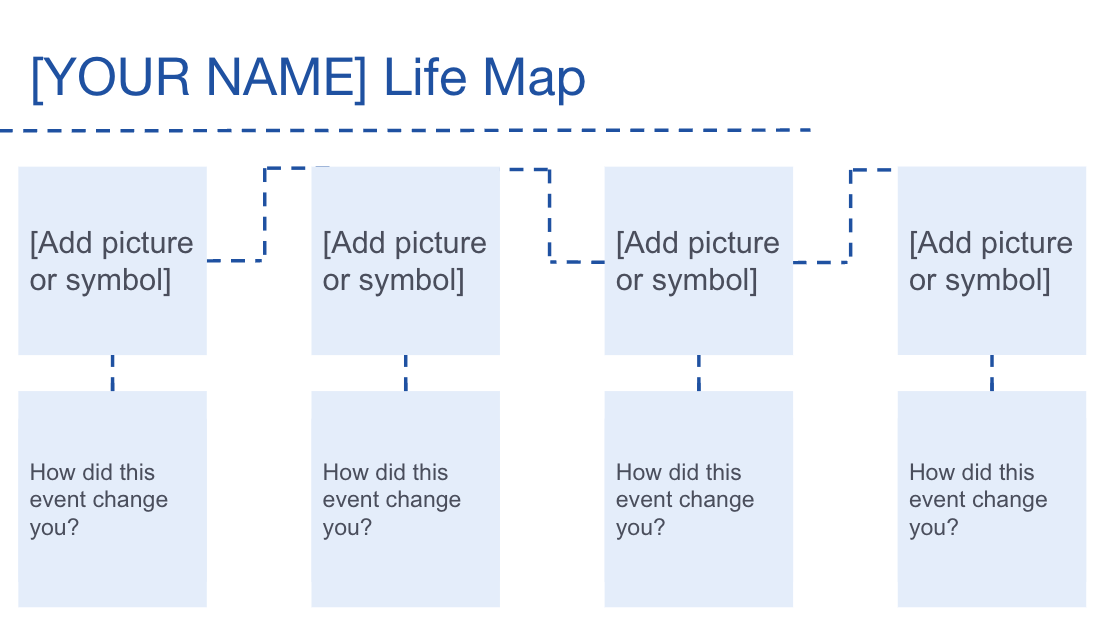How storytelling can improve the classroom experience for MLs


How storytelling can improve the classroom experience for MLs
Our stories aren’t only an outlet to share our most authentic selves with those around us, but a valuable way for multilingual learners (MLs) to contribute to the classroom community. This is especially important because it helps MLs become more comfortable with the vulnerability involved with learning in another language throughout the school year.
When diverse stories are not told
Unconscious biases might cause educators and students to make assumptions about who someone is or what they’re capable of based on stereotypes. This could be their name, skin color, or accent and are just surface-level observations that disregard the full picture of a student's needs and strengths.
While conversations around cultural representation have increased in recent years, most curriculums and learning materials still only represent a narrow portion of the student population. It’s critical for all students, especially English learners (ELs) with diverse backgrounds, to see that they have a place in the classroom and feel valued. Storytelling can increase representation of diverse identities and cultures in the classroom where students may otherwise feel alienated or unseen.
Giving all students a voice and a place

One of the most effective ways for multilingual learners to deeply connect with their classroom is through the power of storytelling. It’s more than just giving students space to bring their own experiences to life and show pride in their culture. When students share their stories, those around them get a more holistic view of their identity – they learn about their strengths, what they’re interested in, what they already know, and the value they bring to the classroom. It allows teachers to connect with MLs a little better, and be able to teach in a way that lets them demonstrate their mastery more authentically.
Stories also give us a window into student needs to better understand why they are struggling in certain areas. Personal stories can be difficult to share, especially for English learners who may be navigating language barriers and cultural differences. As educators, we can facilitate this process by introducing storytelling through modeling – we may bring in a guest speaker to share their story, play a video for the class, and even share something personal of our own.
ELs might also be more comfortable sharing their stories in different formats than oral storytelling. We can allow students to express themselves in other ways like creating art, music, poetry, or even multimedia presentations. Digital storytelling is a great opportunity to leverage technology that this generation is often already comfortable with. During sharing, it’s important to communicate to students that we aren’t expecting or valuing perfect English, and no format is “better” than the rest. The goal is not how students share their stories, but rather that they have the opportunity to share something with purpose.
Beyond show and tell
When you think about sharing student stories in the classroom, show and tell might be the first example that comes to mind. But storytelling can be much more powerful when structured in a way that positions the student as the expert on their own experiences and allows for the rest of the class to ask questions. Giving students the space to talk about what’s familiar to them in a format they are comfortable with encourages others to respect their peers and builds a sense of community that values all perspectives.
The opportunity to speak about familiar content is especially important for MLs, for whom school is so often a largely unfamiliar experience – from the food being served to the holidays being taught to the lesson content they are regularly interacting with. By offering them a space to be the expert on something they know the most about, we can amplify their voice and foster a sense of confidence that will carry into those other areas.
There is a considerable amount of vulnerability involved for MLs to share aloud during class, but after sharing a personal experience and seeing that it has been well received by their classmates and teacher, students are often less intimidated by participating in group discussions and learning.

As educators, we can also use what we learn about our students from their stories to build bridges to content and make the material more relevant to our MLs. This increased understanding of our students can also help us better understand student data – their home life and past school experiences can shed light on their current academic performance and the best strategies for supporting their learning.
Try this: Strategies for incorporating storytelling into your classroom
Empowering MLs to share their stories aids our mission to help English learners achieve their highest aspirations. There are a number of activities that the experts at Ellevation have developed that can be used in the classroom. If your district uses Ellevation Strategies, you can access any of these full activities. We have shared a free download and plus a few more suggested activities below:
- My Life Map: This activity can easily be used by both students and teachers, so it’s a great chance to model your own storytelling and vulnerability. Participants will identify personal experiences that have changed them, reflect on these experiences, and then share how they have changed the way they react to the world. Download the activity page here.
- I Know My Full Name: This activity allows students to dive into and share context around their name – the story behind their name, their families and personal history, and how this has shaped their identity today.
- I Am Monologues: With this activity, students aren’t sharing their own personal stories but rather sharing information from the perspective of the person, place, or thing they have selected to report out on. This is great practice with the format of storytelling to build those language skills and set students up for success when they share their own stories.
Storytelling can be a powerful tool for celebrating diversity in the classroom. By creating opportunities to share stories from different cultures and perspectives, teachers can help students develop empathy, inclusivity, critical thinking skills, language skills, and a love for learning.
This article was written in partnership with Anamika Dugger, Instructional Content Specialist for Ellevation Strategies. Anamika has taught ESL, ELA, and writing for multilingual learners in the US, Middle East, and Asia, and is passionate about ensuring that all students have access to a high-quality, language-rich education.
